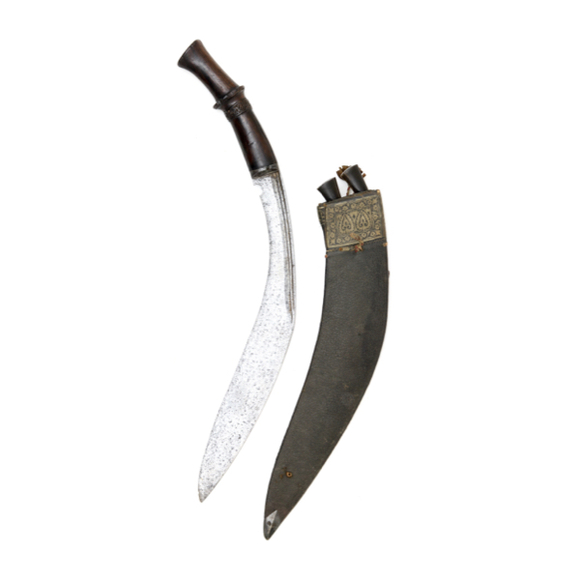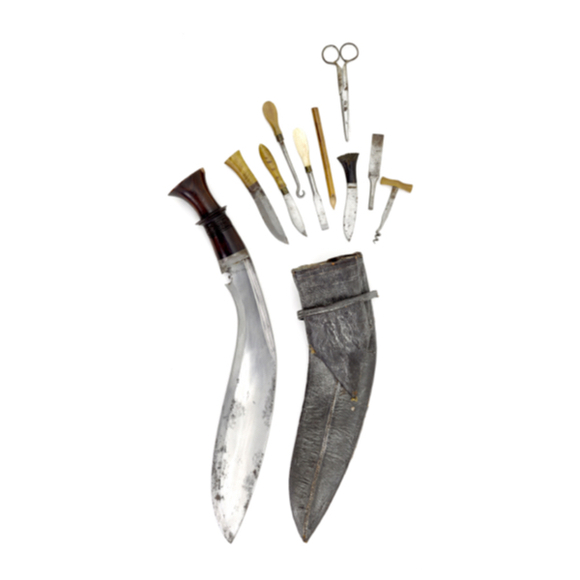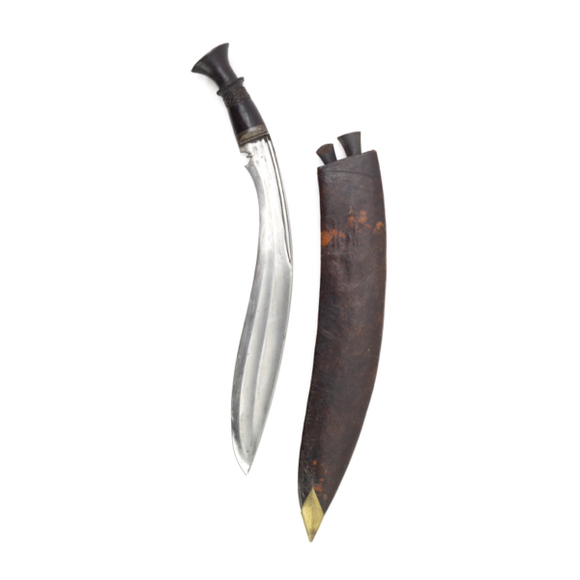Language: Ainu
Source: John Batchelor; An Ainu-English-Japanese dictionary. 1905.
Description
Makiri is the Ainu word for knife. They typically have curved, single-edged blades with a sharp point. The edge has a single bevel, on the right side. The hilt follows the same curve as the blade.
The hilt and scabbards are made of wood, usually carved with decorative motifs. Scabbards can be made of a single piece, or two pieces and with strips of cherry bark to reinforce them.

Three makiri.
Mandarin Mansion inventory 2022.

Markings on the blades.
Use
The Ainu men used their makiri for woodcarving and for preparing food. Women carried a slightly smaller version called menoko-makiri which they used for food, and for the gathering of fruits and bark.
"The knife in cutting is frequently, perhaps generally, drawn toward the cutter."
-Frederick Starr; The Ainu group at the Saint Louis exposition.
Chicago, The Open Court Publishing Company, 1904. Page 106.
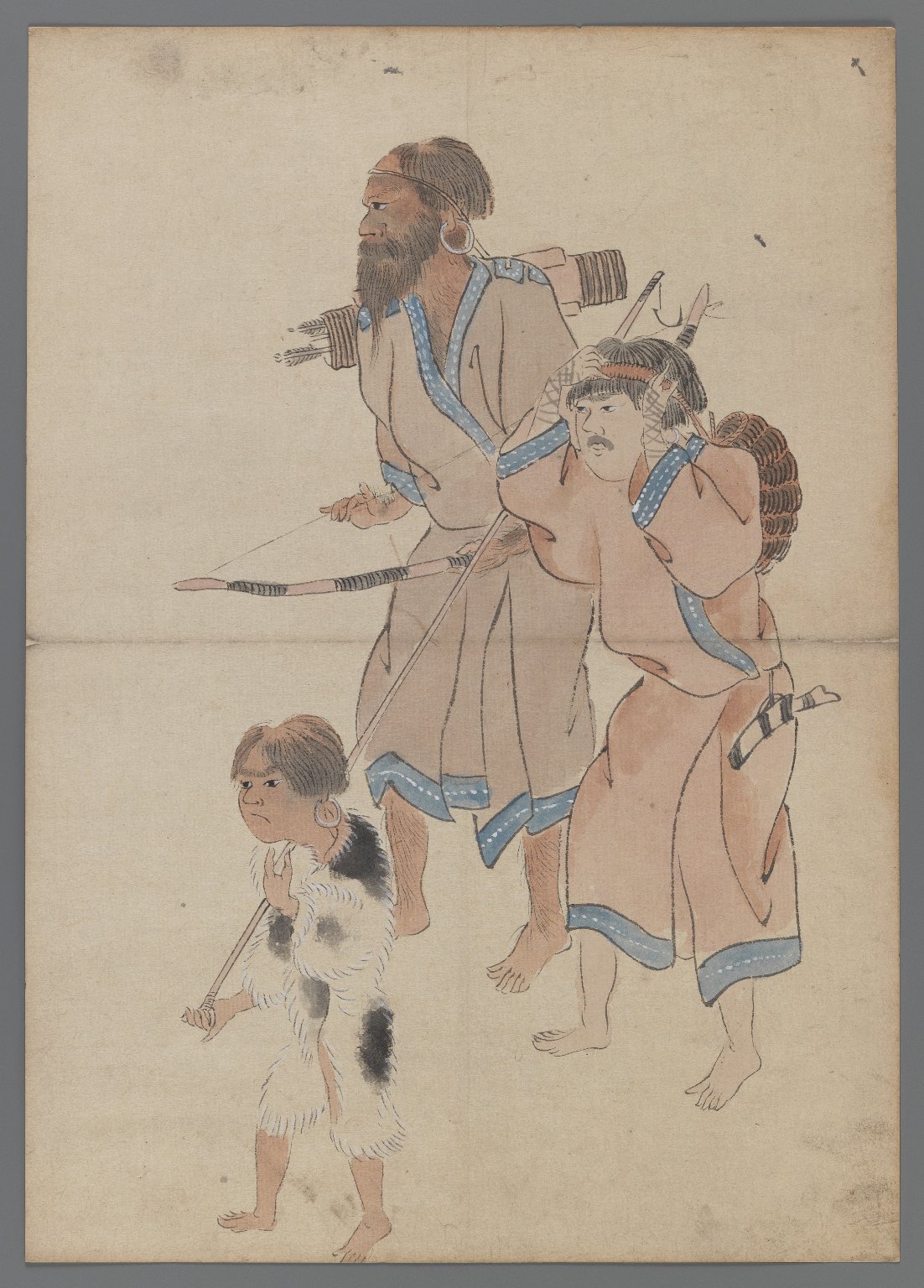
Ainu hunters. The one on the left carrying his makiri.
19th century painting. Anonymous.
Brooklyn Museum accession number X1085.
Notable examples
The Museum Volkenkunde in Leiden has two makiri that were collected by Philipp Franz Balthasar von Siebold, who must have acquired it before 1826, which makes them the earliest provenanced makiri known to me. Both were purchased by the museum in 1837. Accession numbers RV-1-4108 and RV-1-3695.
A drawing of the latter appears in Siebold's Nippon, Leiden, C.C. van der Hork. 1832:

Illustration of Ainu items from the Nippon Atlas.
The British Museum has an Ainu knife that was brought back by Dr. John Andersen and donated to the museum in 1885. Accession number As1885,1219.3.a-b.
Glossary of terms
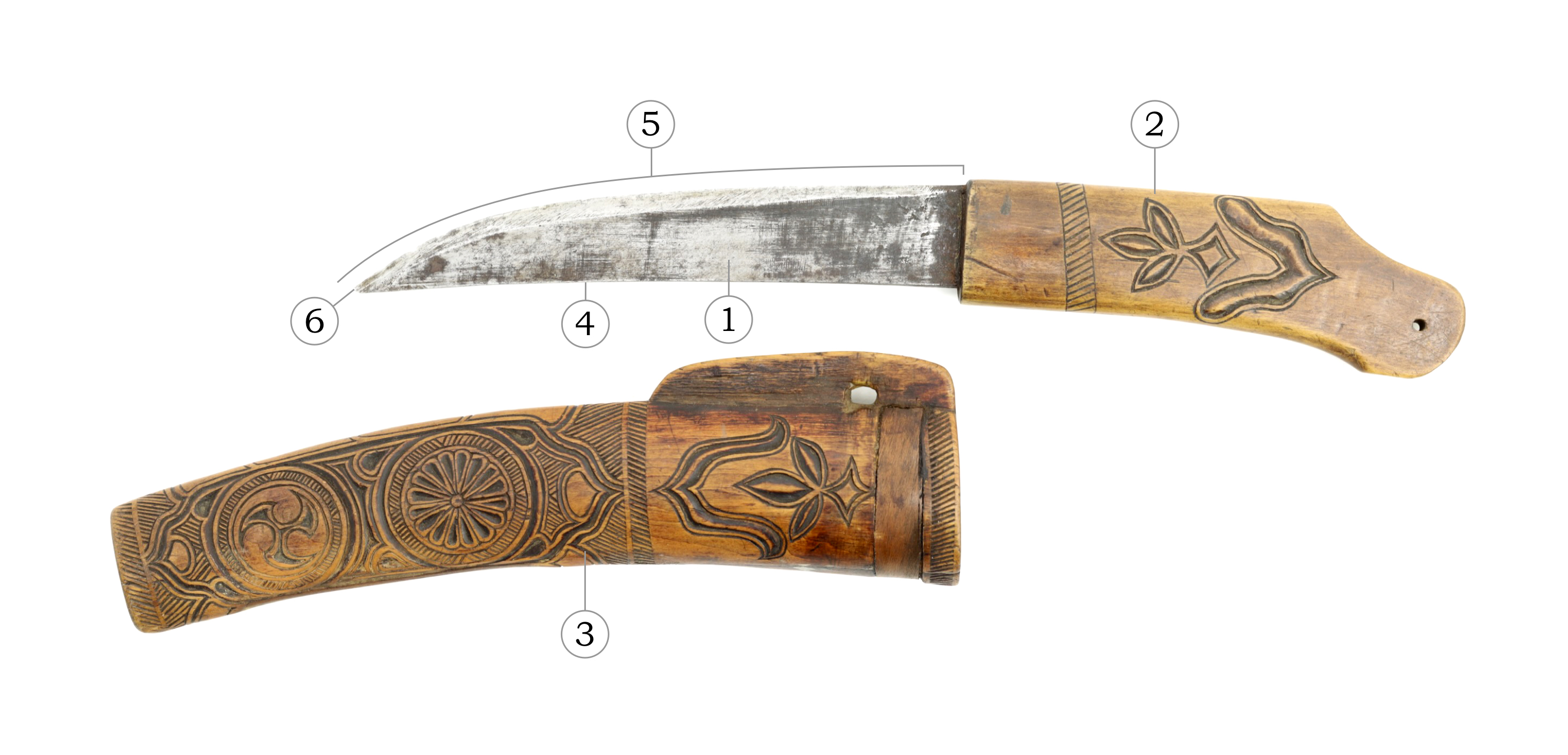
| # | English | Ainu | |
| 1 | Knife blade | makiri-ibe / ibehe | |
| 2 | Knife handle | makiri-nip | |
| 3 | Knife sheath | makiri-saya | |
| 4 | Back of knife | mekkashike | |
| 5 | Edge | notak | |
| 6 | Point of knife | kanetuhu / etuhu | |




